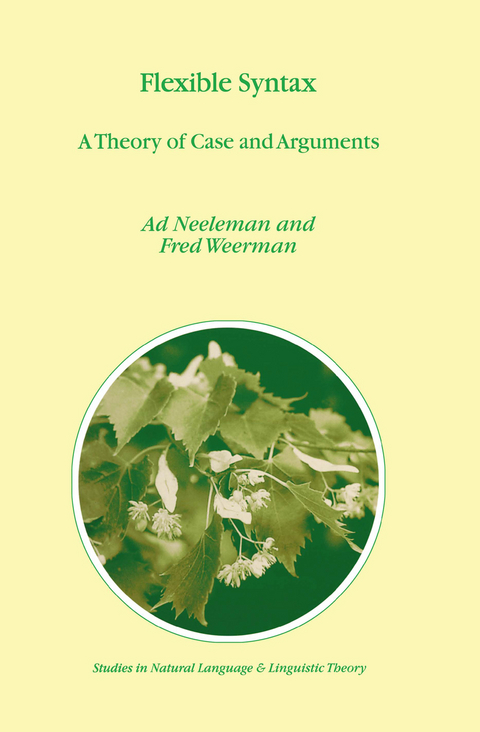
Flexible Syntax
Springer (Verlag)
978-0-7923-7199-1 (ISBN)
1: Prologue.- 1. Introduction.- 2. Case Theory.- 3. ?-Theory.- 4. Word Order.- 5. Overview.- Bibliographical Note.- 2: The OV/VO Parameter.- 1. Introduction.- 2. The Domain of ?-role Assignment.- 3. The Domains of Head Government.- 4. The Formation of VP Shells.- 5. Particles.- 6. Scrambling.- 7. Double Object Constructions.- 8. Exceptional Case Marking.- 9. Concluding Remarks.- 3: Morphological Case.- 1. Introduction.- 2. Asymmetries between Nominative and Case.- 3. Syntactic Effects of Morphological Case.- 4. Toward a Theory of Case Features.- 5. Concluding Remarks.- 4: Prepositional Complements.- 1. Introduction.- 2. The Problem.- 3. Indirect ?-Role Assignment.- 4. LF Incorporation.- 5. Empirical Consequences.- 6. PP Complements to Nouns.- 7. Concluding Remarks.- 5: Raising to Subject.- 1. Introduction.- 2. ?-Role Promotion as A’-Movement.- 3. NP Raising as Null Operator Movement.- 4. Short versus Long Null Operator Movement.- 5. Improper Movement.- 6. Concluding Remarks.- 6: Head Marking.- 1. Introduction.- 2. Head-Marking Affixes.- 3. Absolutive-Ergative Languages.- 4. VSO Languages.- 5. The Linearization of Subjects.- 6. Concluding Remarks.- 7: Epilogue.- 1. Introduction.- 2. Falsifiability.- 3. Flexibility.- References.
| Erscheint lt. Verlag | 30.9.2001 |
|---|---|
| Reihe/Serie | Studies in Natural Language and Linguistic Theory ; 47 |
| Zusatzinfo | XI, 253 p. |
| Verlagsort | Dordrecht |
| Sprache | englisch |
| Maße | 160 x 240 mm |
| Themenwelt | Geisteswissenschaften ► Philosophie ► Sprachphilosophie |
| Geisteswissenschaften ► Sprach- / Literaturwissenschaft ► Sprachwissenschaft | |
| ISBN-10 | 0-7923-7199-2 / 0792371992 |
| ISBN-13 | 978-0-7923-7199-1 / 9780792371991 |
| Zustand | Neuware |
| Haben Sie eine Frage zum Produkt? |
aus dem Bereich


